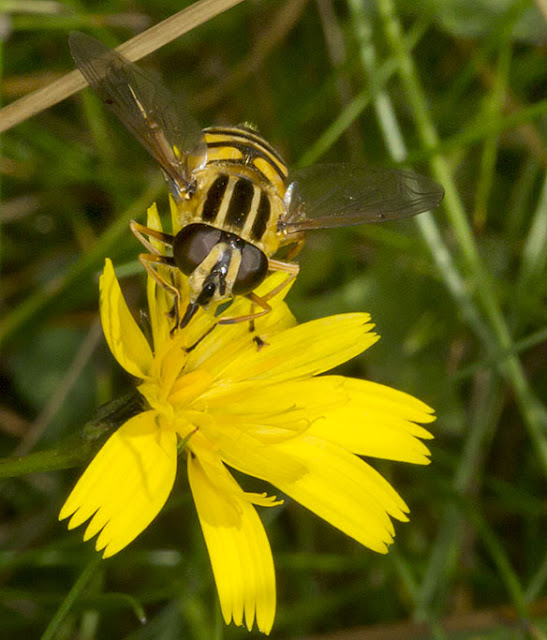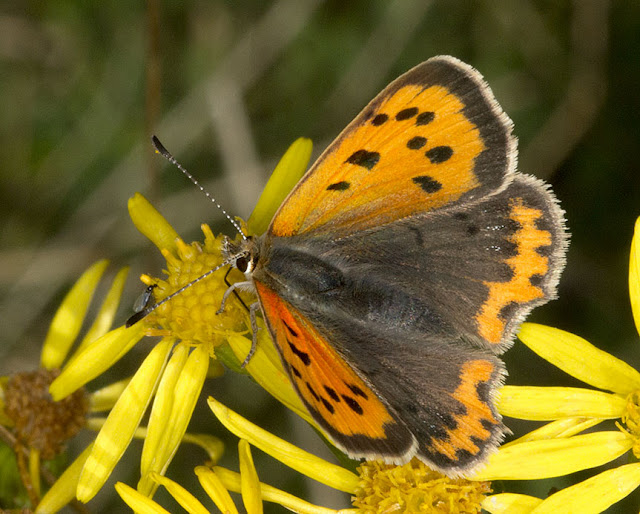 |
| Blue-tit, Cyanistes caeruleus, in my garden in Hayes. 30 November 2012. |
Please don't think I am putting these up as examples of bird photography. I took them through my window, often with branches obscuring parts of the birds, sometimes at odd angles or blurry. They are here to show the fun I get from having a bird feeder in my garden.
I managed to get some sort of image of all four types of tit that come to the feeder. The Bluetit is the commonest, a bright and pretty bird. Blue cap, yellow breast.
 |
| Great Tit, Parus major. In my garden in Hayes on 27 November 2012. |
Next commonest it the Great Tit, with a shiny black cap and a broad black stripe down its breast. All these birds love peanuts, which should not be fed to them in the spring in case they choke the chicks. They take them to a branch and peck away at them.
 |
| Coal-tit, Periparus ater, in my garden in Hayes. 30 November 2012. |
Coal Tits have a black cap with a white stripe. They are less common, and I was pleased to see a pair. They had been missing since a recent harsh winter.
 |
| Long-tailed Tit, Aegithalos caudatus, in my garden in Hayes. 27 November 2012. |
I only just managed to get this shot, and I apologise for its blurriness. Long-tailed Tits are smaller than the others. They live in the woods, and move around in small flocks, usually accompanied by a few of the other species. Just occasionally they will decide to foray around their local gardens, and they are only there for a few minutes, so you have to be lucky to see them.
I also see Robins, Dunnocks, Jays, Blackbirds, Chaffinches, Wood Pigeons, Collared Doves, and occasionally Wrens. Some of them like the feeder, and some forage below it for pieces dropped by the others, or turn over dead leaves elsewhere. My garden is too small for the local crows to like it. But I am pleased that I planted Hawthorns. The small birds feel safe in the maze of thorny branches.




















